Not my headline! It should, of course, read 'Romanov Imperial Family'.
From Russia Beyond
An artist has given black-and-white photos of Nicholas II and his children vivid color and now the princesses and the crown prince look incredibly alive.Old black and white photos make people look as if they were prehistoric and it’s hard to imagine what they really looked like. Artist Olga Shirnina, known on the Internet under the username ‘Klimbim’, however, gives a second life to such old photos. She does the painstaking work of adding color, drawing on historical sources for authenticity.
Thanks to such colored photographs, one can better imagine what a historical figure looked like in reality. Olga’s already revitalized photo collections of World War II heroes, Russian beauties of tsarist times and many others. And here are photos of the last Russian tsar and his children brought to life with color. And they are especially sensitive to look at, given their tragic deaths.
Nicholas II with his family, 1914
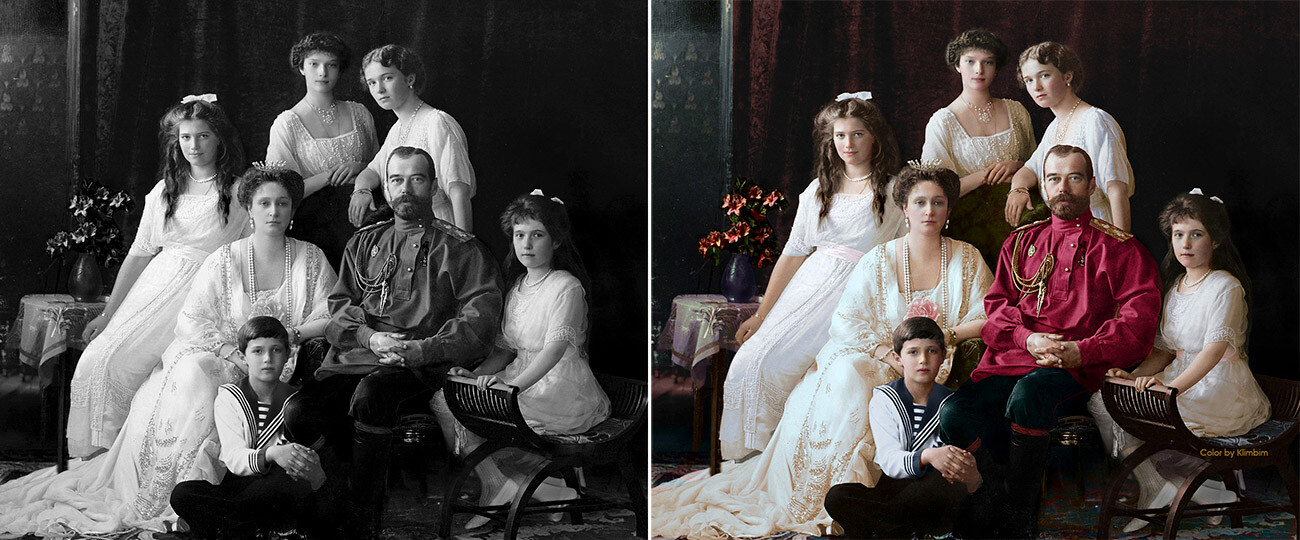
The eldest daughter of Nicholas II and Alexandra Feodorovna was Grand Duchess Olga. She was born in 1895, the second year after the wedding and, according to witnesses, the birth of the empress brought terrible pains.
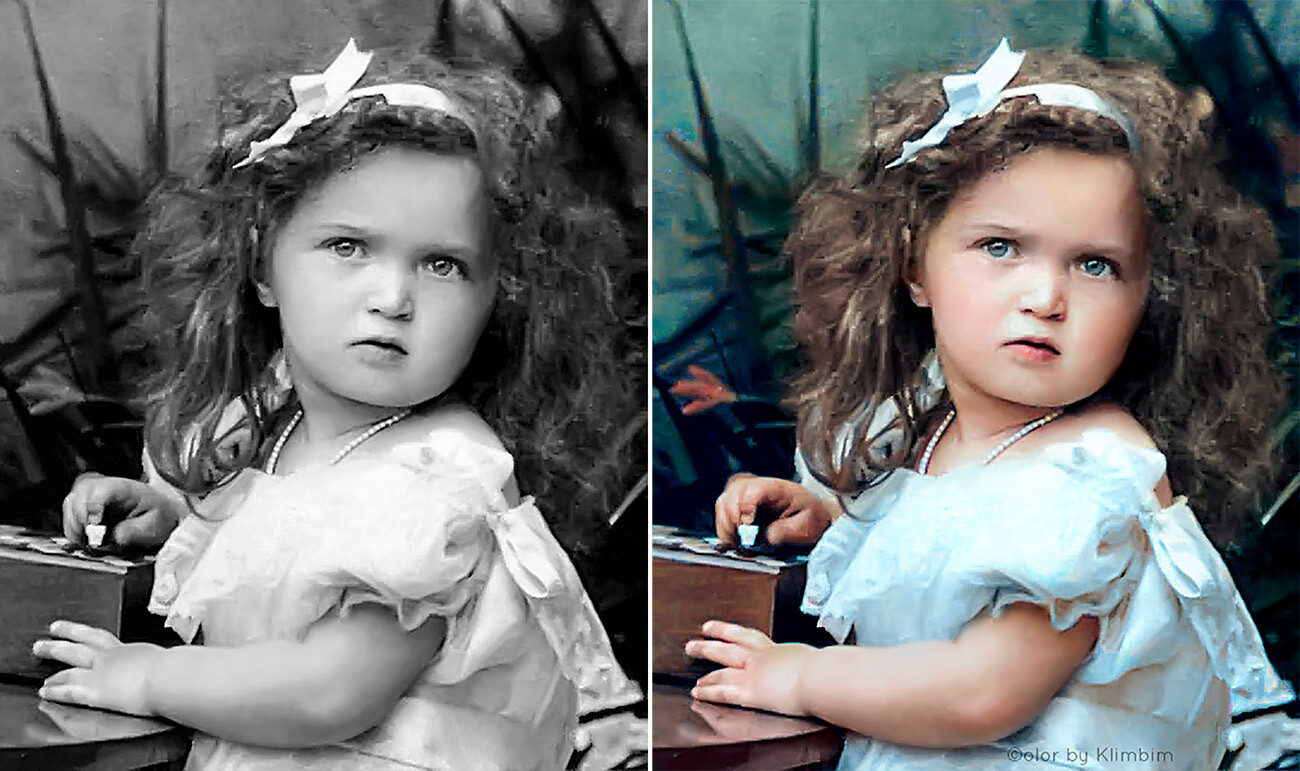
The empress’ maid of honor recalled Olga’s appearance this way: “She had lovely blond hair, big blue eyes and a wonderful face color, with a slightly upturned nose like the Sovereign’s.”
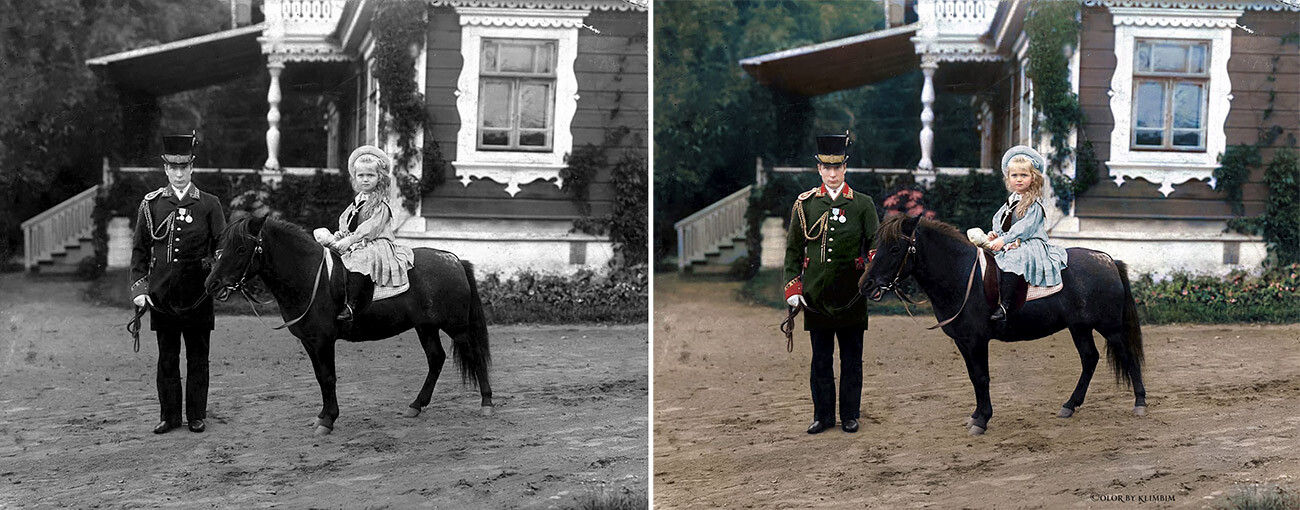
Below, Olga is pictured aboard Nicholas’s II favorite yacht, the Standard.
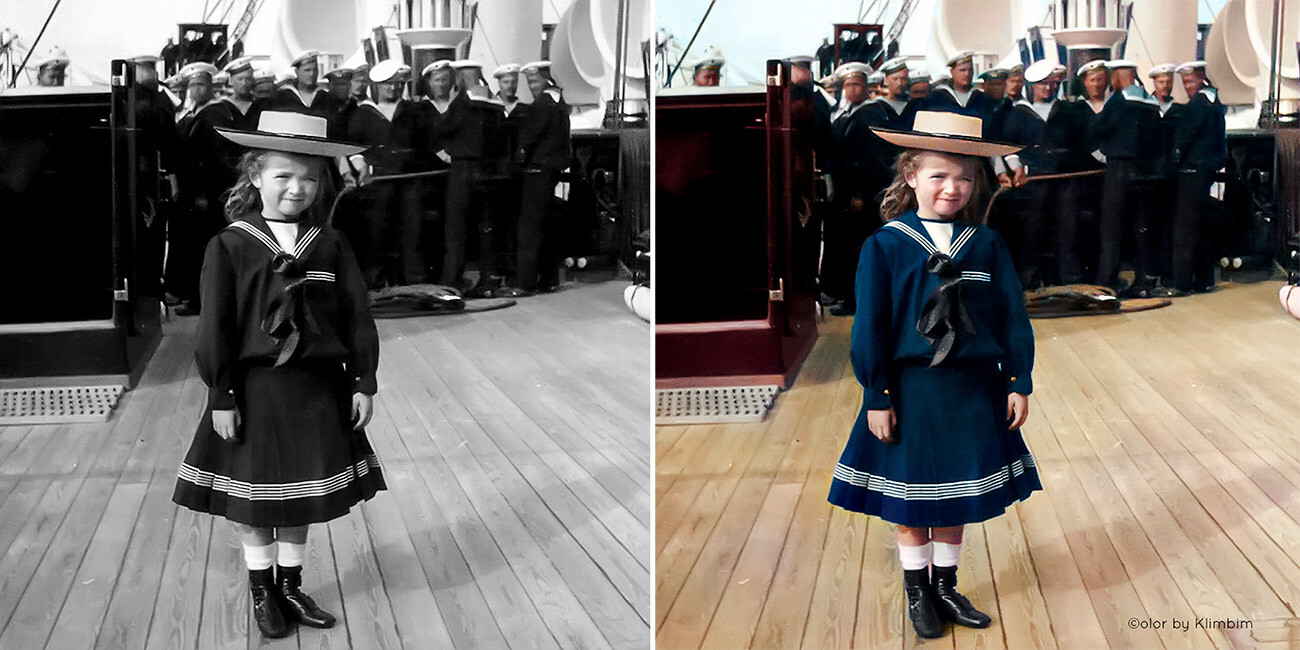
Olga was the only daughter who could object to her royal parents.
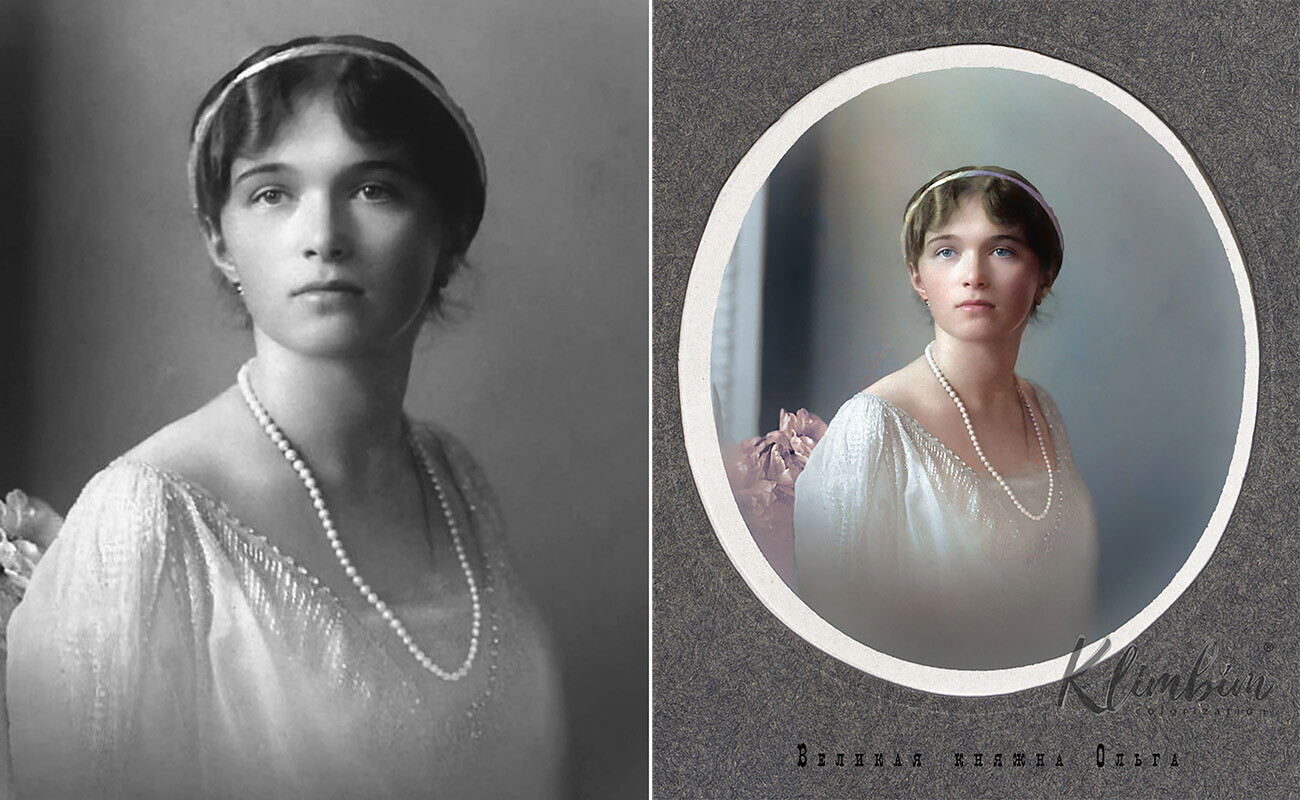
Olga was very friendly with the second Grand Duchess, Tatiana (pictured below on the left).
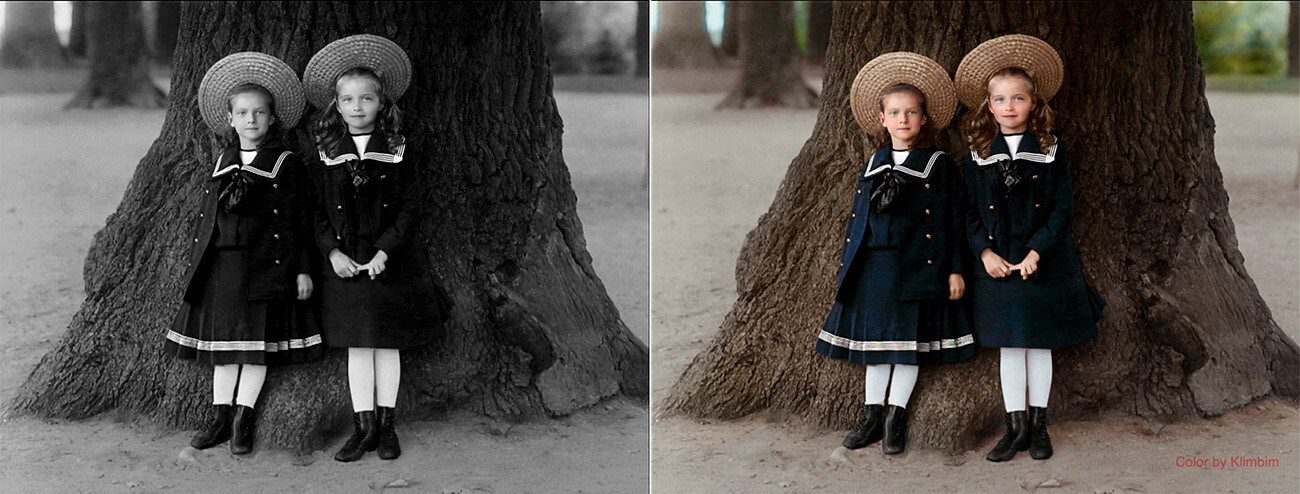
Tatiana was born in 1897. She had a modest temperament and, according to rumors, was even embarrassed when she was addressed as “Your Imperial Highness”.
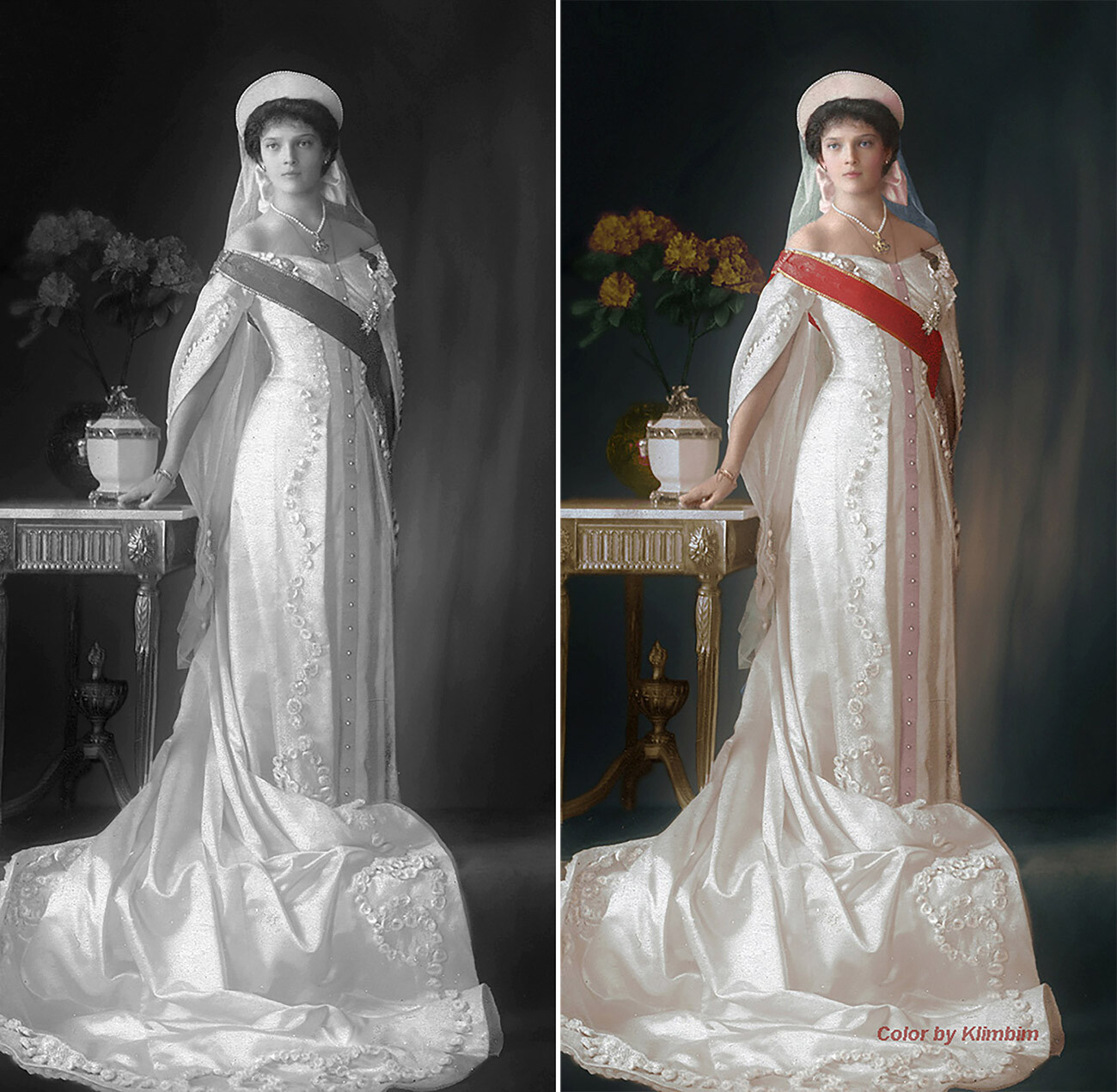
Tatiana (pictured below on the right) had every chance of marrying Prince Alexander, son of Serbian King Peter I, but World War I broke the plans of the royal houses to become related.
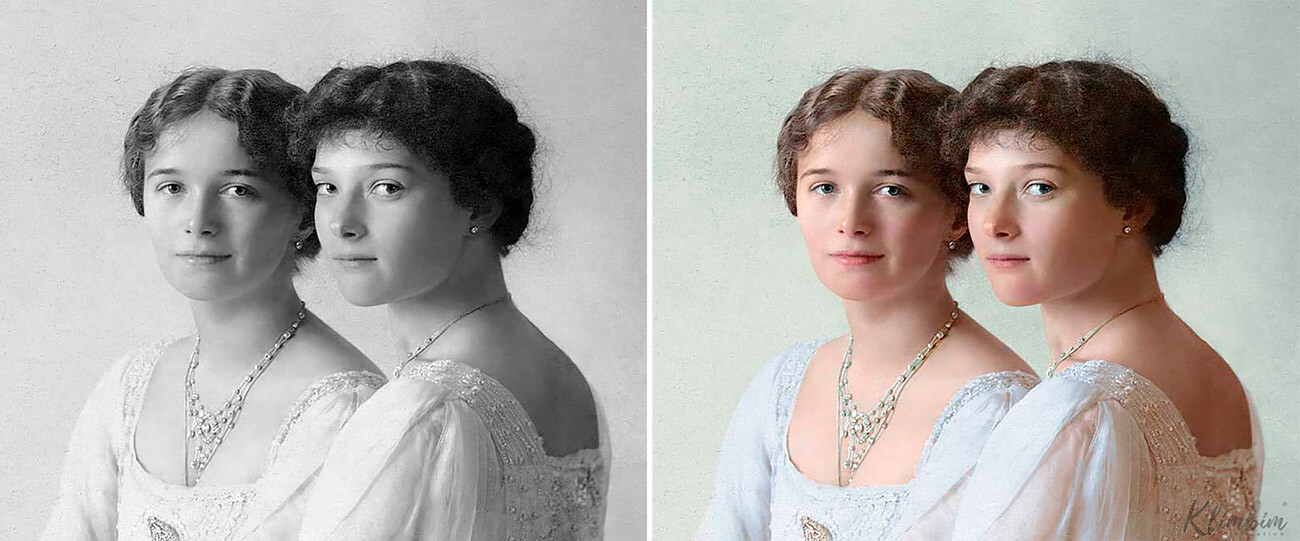
Of all the daughters, it was Tatiana who was closest to her mother.
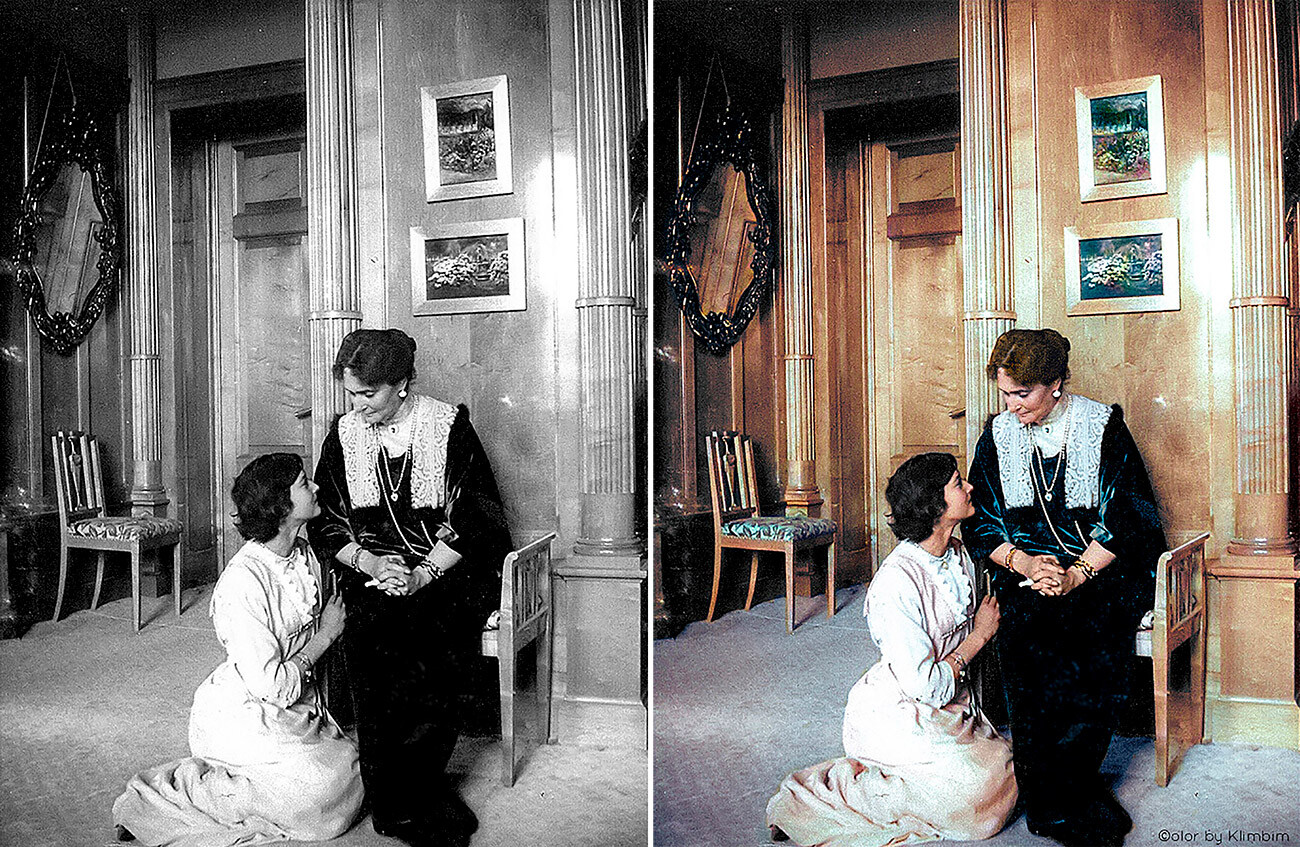
Olga and Tatiana (pictured below in the center) worked as sisters of mercy during World War I. At the order of the emperor, an infirmary for the wounded was organized right in the halls of their royal residence, Tsarskoye Selo palace (as well as Winter Palace).
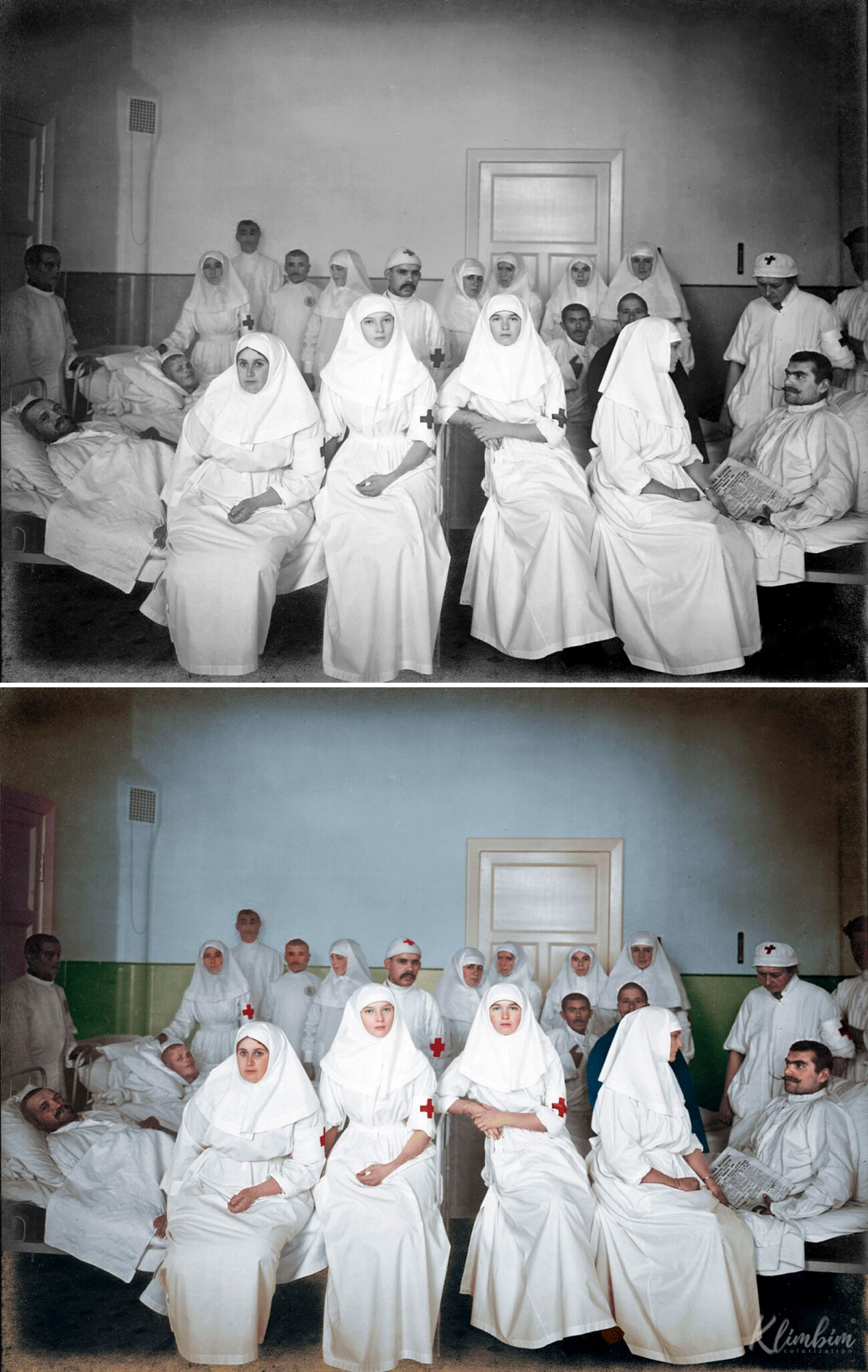
The tsarist family on vacation at Gatchina, 1912
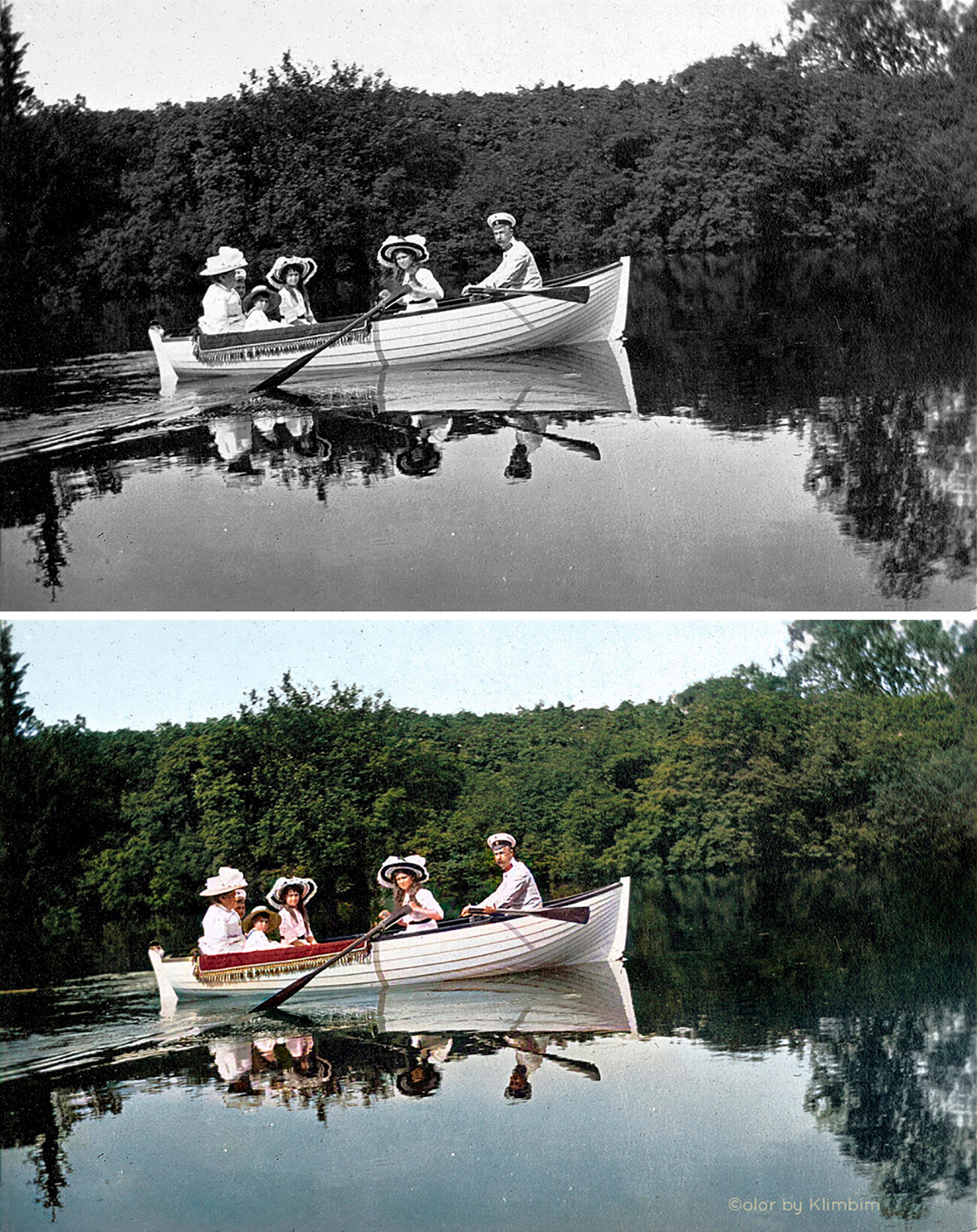
The third oldest child in the royal family was Grand Duchess Maria. She was born in 1899.
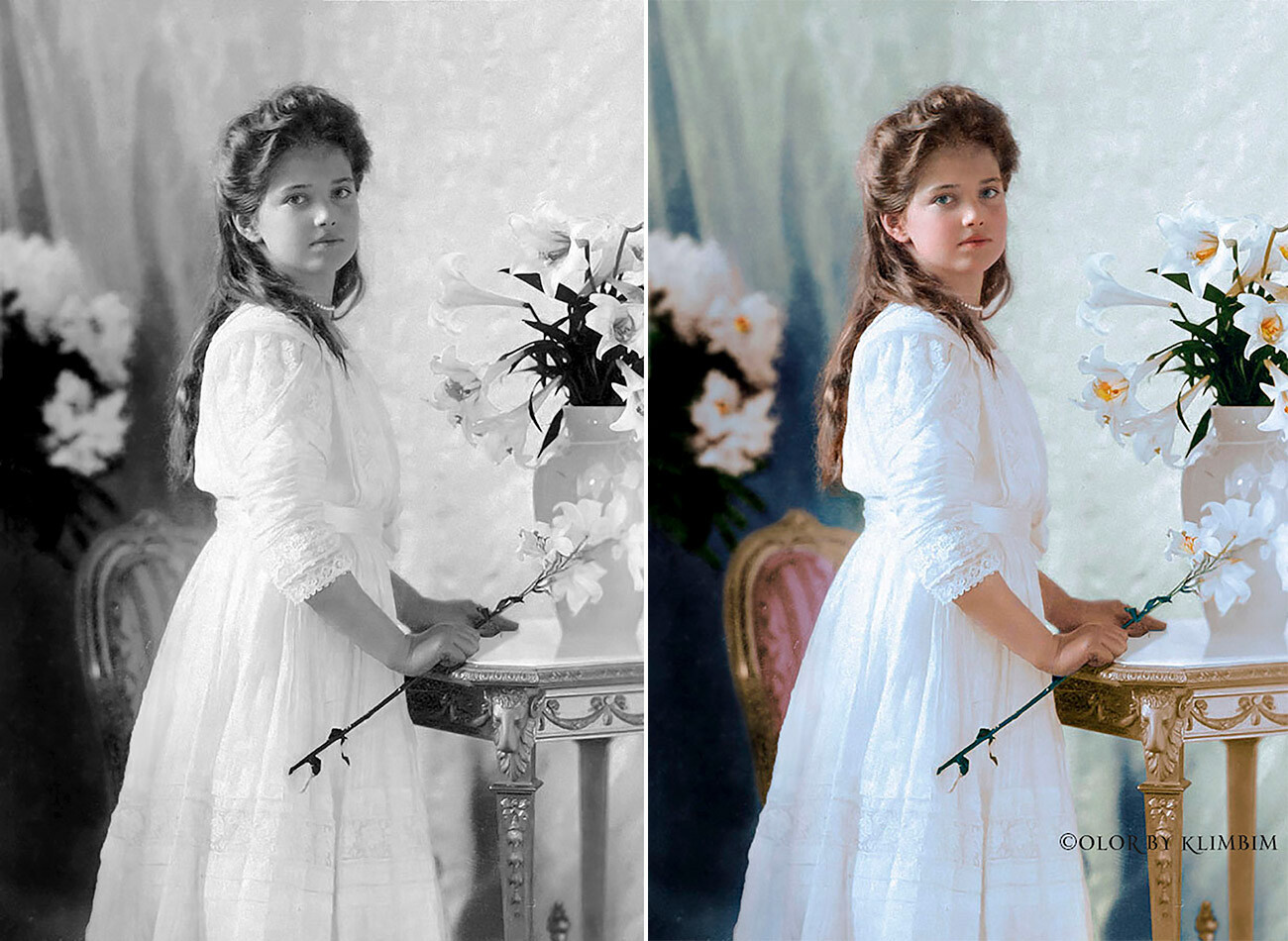
People close to her recalled that Maria had an easy character and smiled a lot. The photo below shows Maria (left) with Olga.
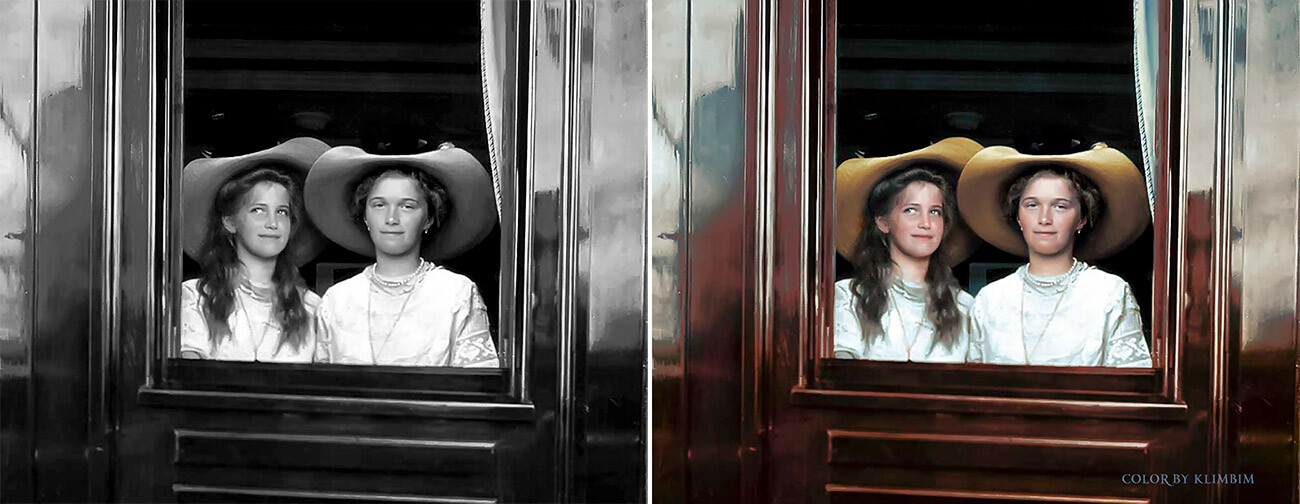
The empress’s maid of honor described Maria this way: “She can safely be called a Russian beauty. Tall, plump, with sable eyebrows, with a bright blush on her open Russian face, she is especially sweet to the Russian heart.”
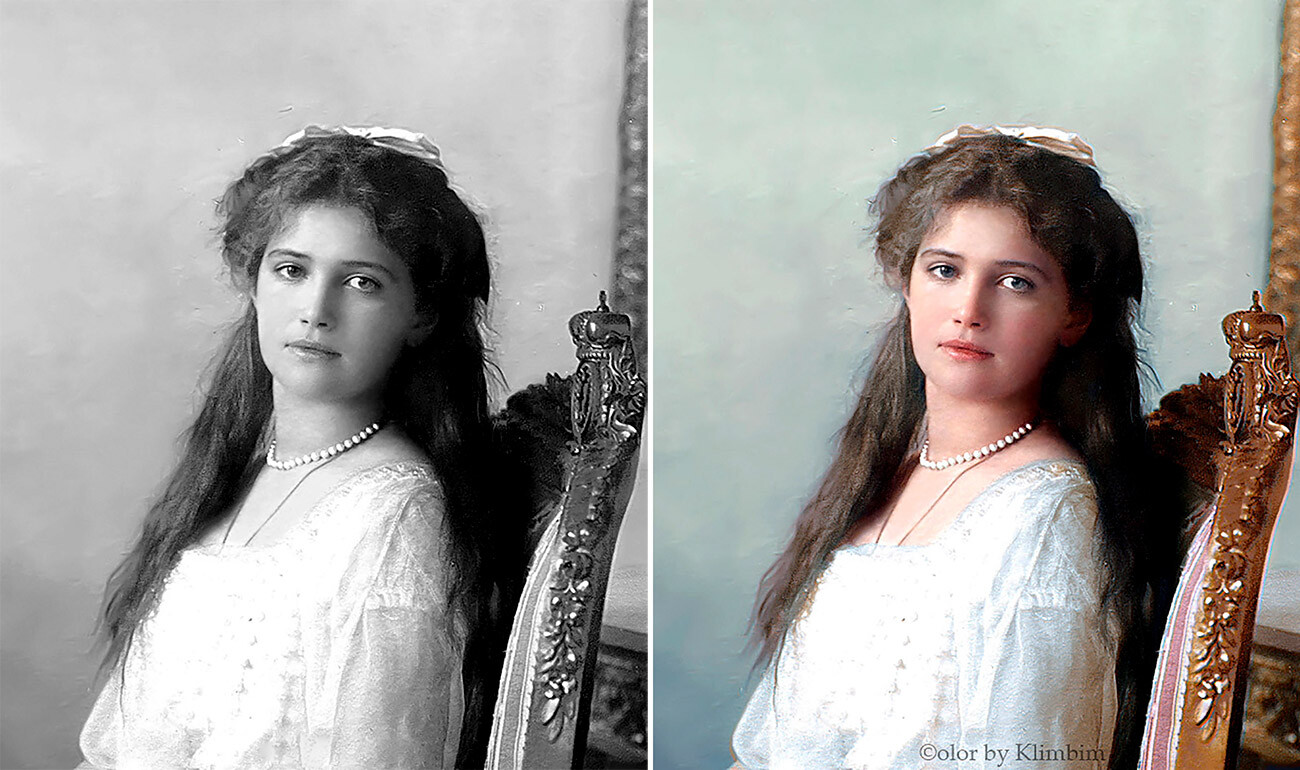
Below, the grand duchesses pose, while gathering mushrooms in a forest, 1912
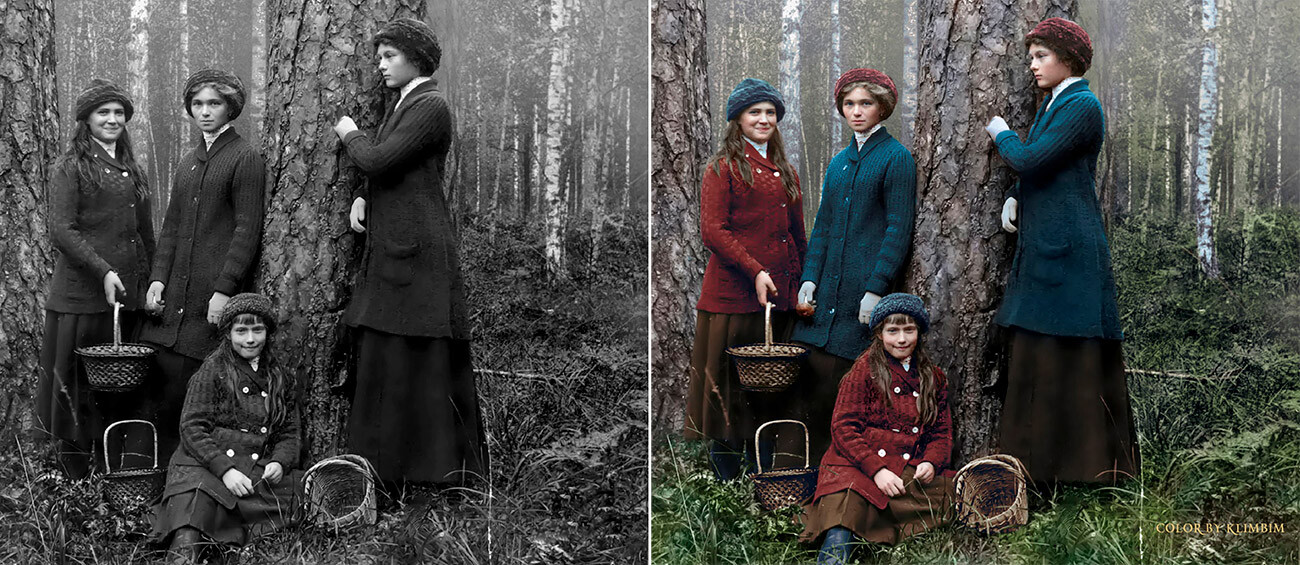
Pictured below are Olga, Tatiana, Maria and Nikolai Rodionov, senior lieutenant of the Tsar’s Guards Crew.
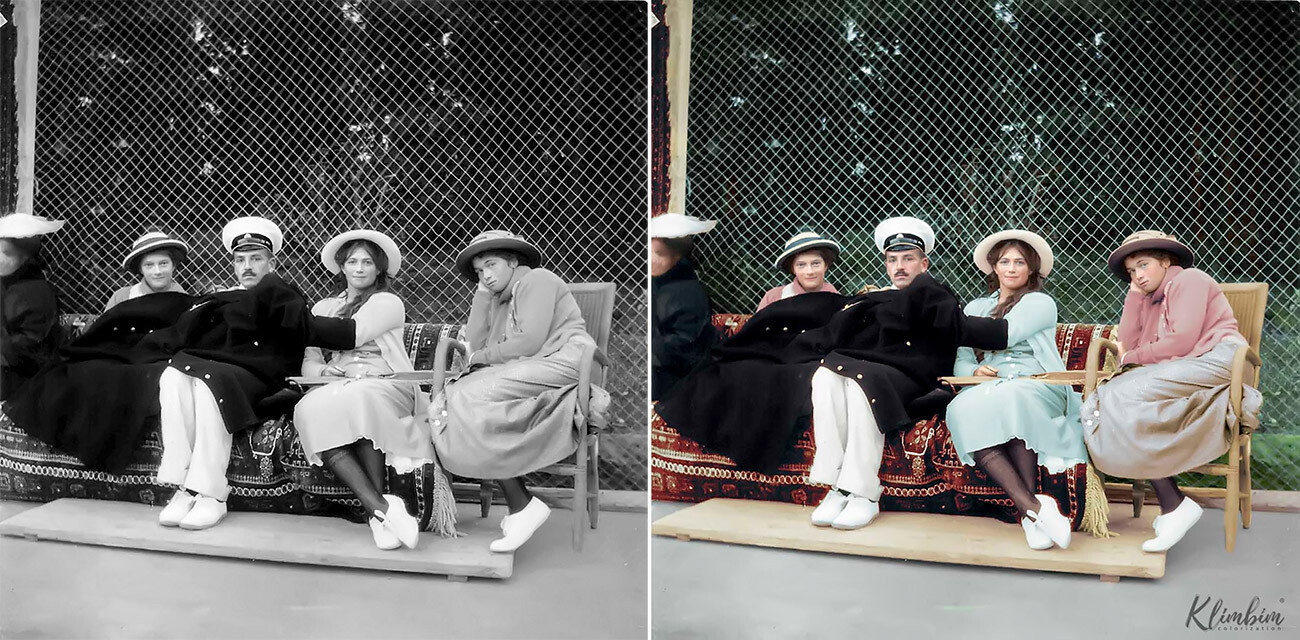
Born in 1901, Anastasia was Nicholas and Alexandra’s fourth daughter.
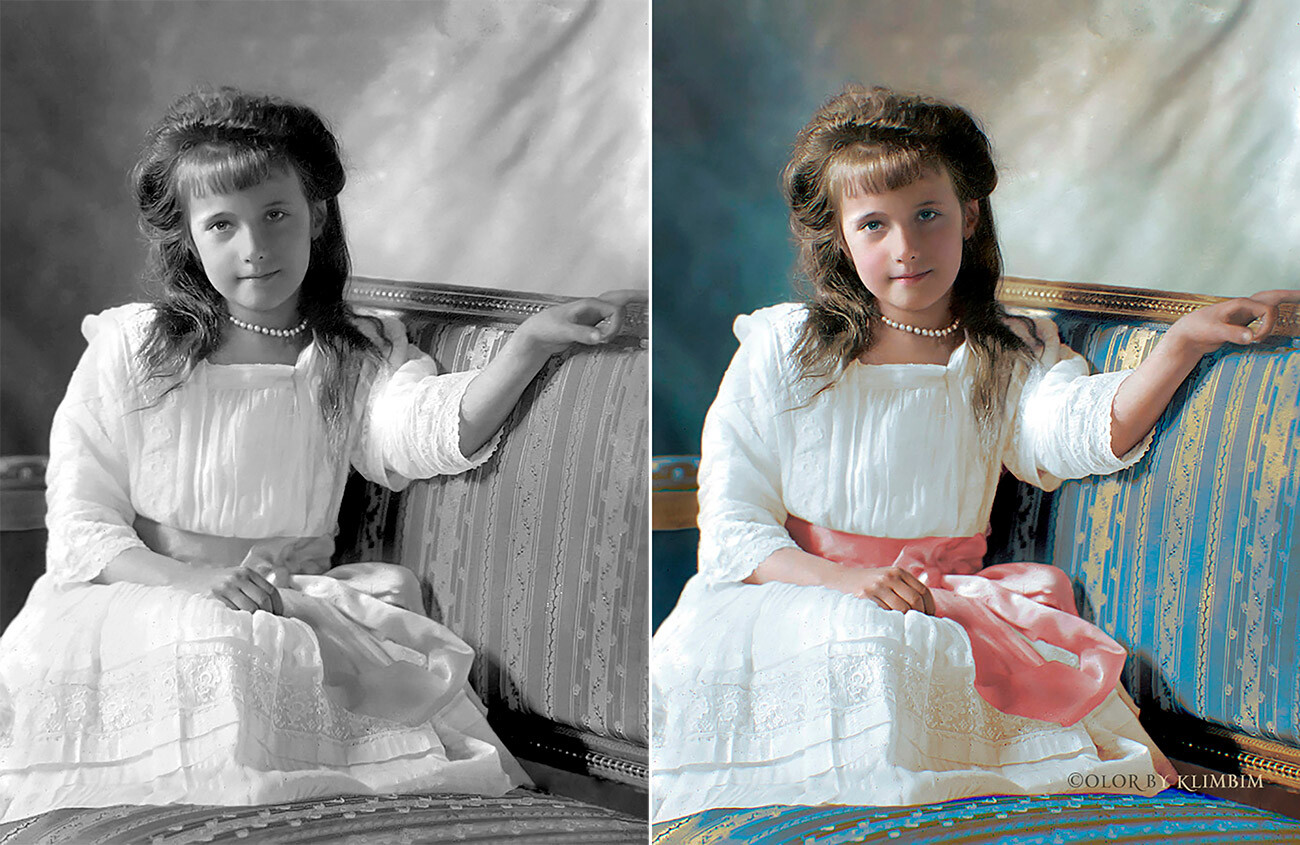
Anastasia is perhaps the most famous of Nicholas’s daughters, all thanks to the huge number of impostors posing as her. The legend that she was the only one who survived the execution of the royal family was reflected in popular culture - with numerous movies and cartoons made on the subject. (below, Anastasia is posing for a photo on the Standard yacht).
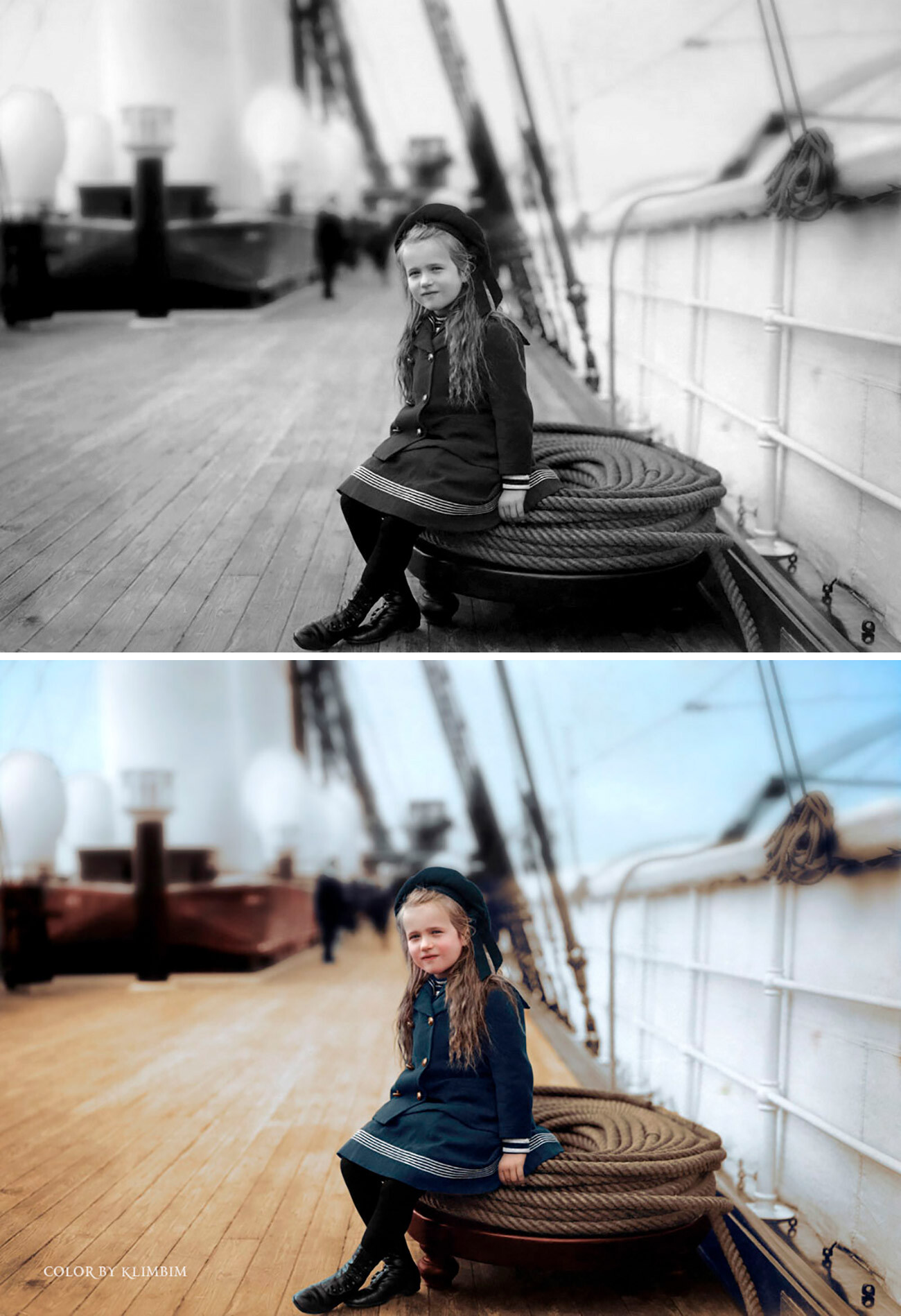
After four daughters, the royal couple had all but given up having a son - and yet, in 1904, Tsarevich Alexei was born.
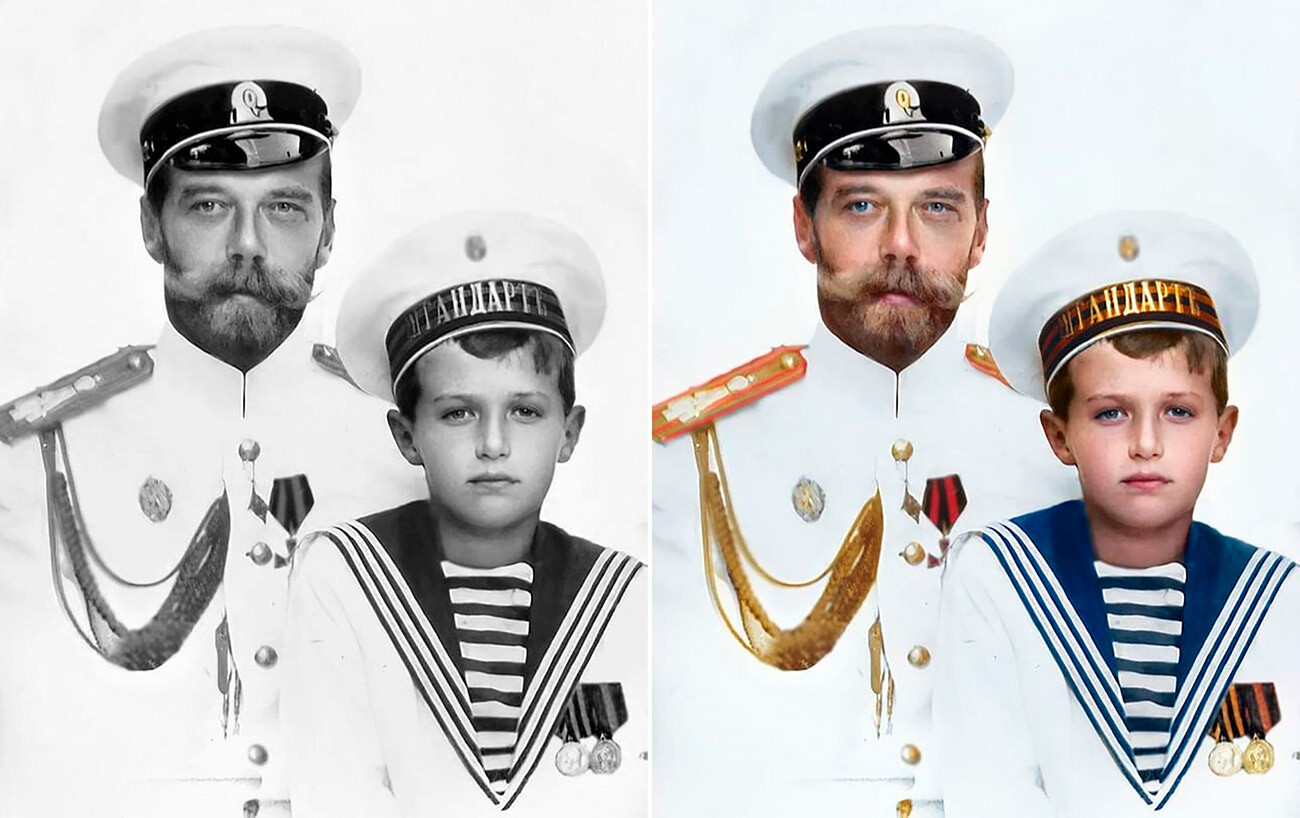
However, the joy of the appearance of the heir to the throne was overshadowed by his illness - the boy had hemophilia, poor blood clotting, which, in the early 20th century, was inevitably fatal.
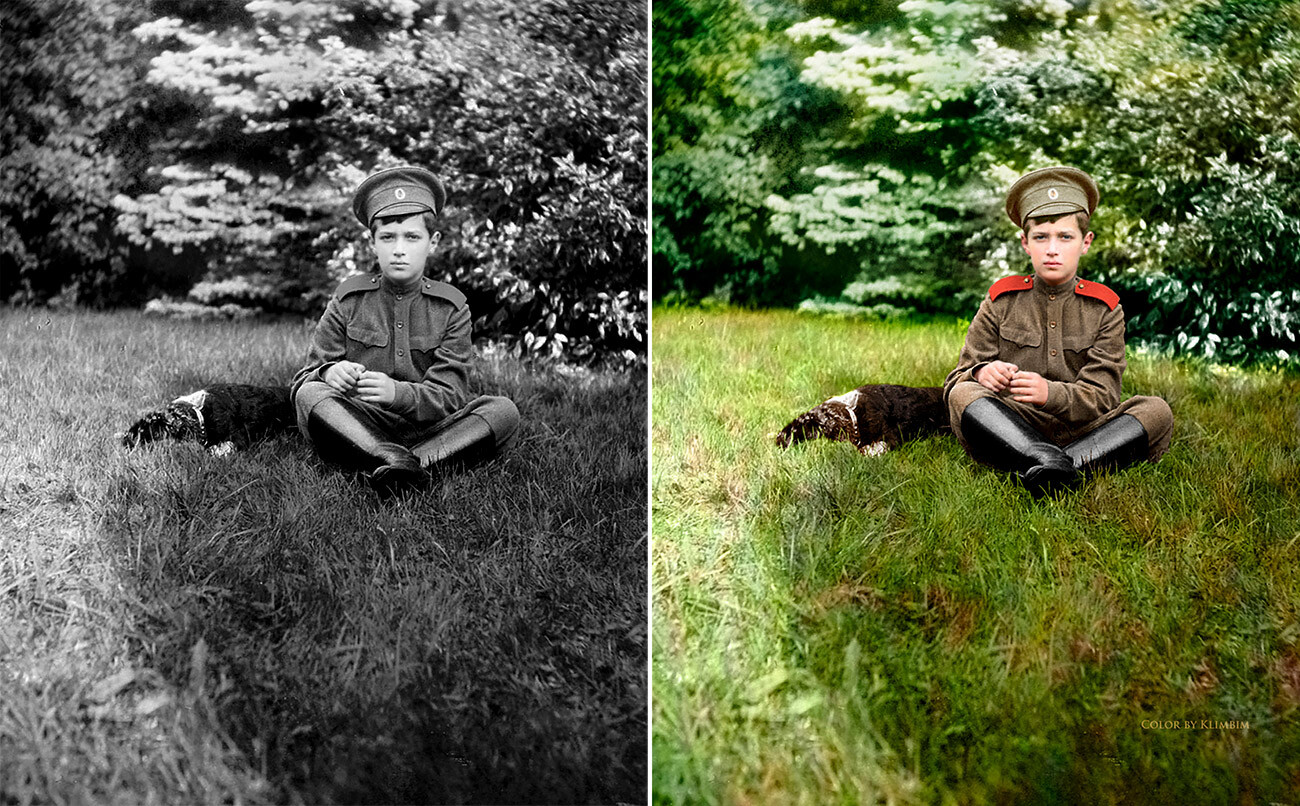
The only person who could stop the bleeding of the little prince (and, at the same time, the hysteria of his mother-empress) was Grigory Rasputin, a Siberian peasant who became a friend of the royal family to the general discontent of Russian high society.
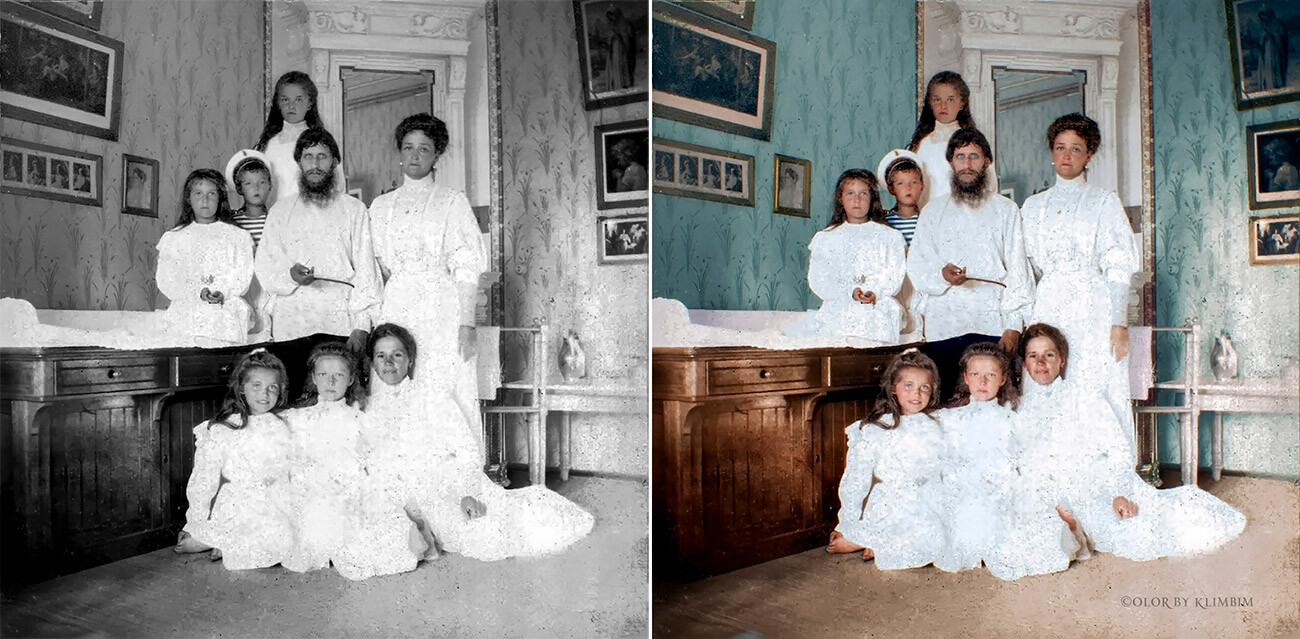
Despite his poor health, Alexei was fond of the army - he wore a uniform and was very fond of simple food - “cabbage soup and black bread, which all my soldiers eat.” And he even tried to do some exercises from military training.
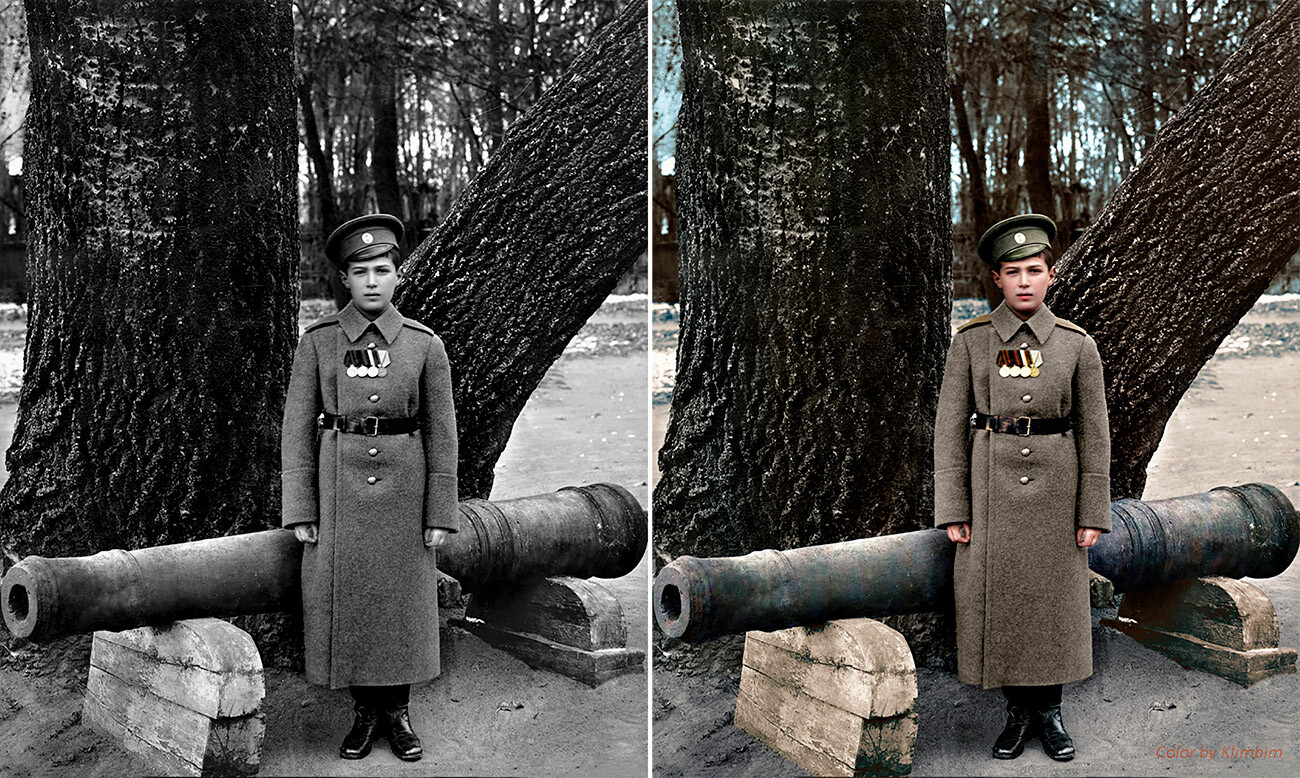
By seniority: Olga, Tatiana, Maria, Anastasia, and Alexei.

Olga, Tatiana, Maria, Anastasia posing for a photo in 1916.
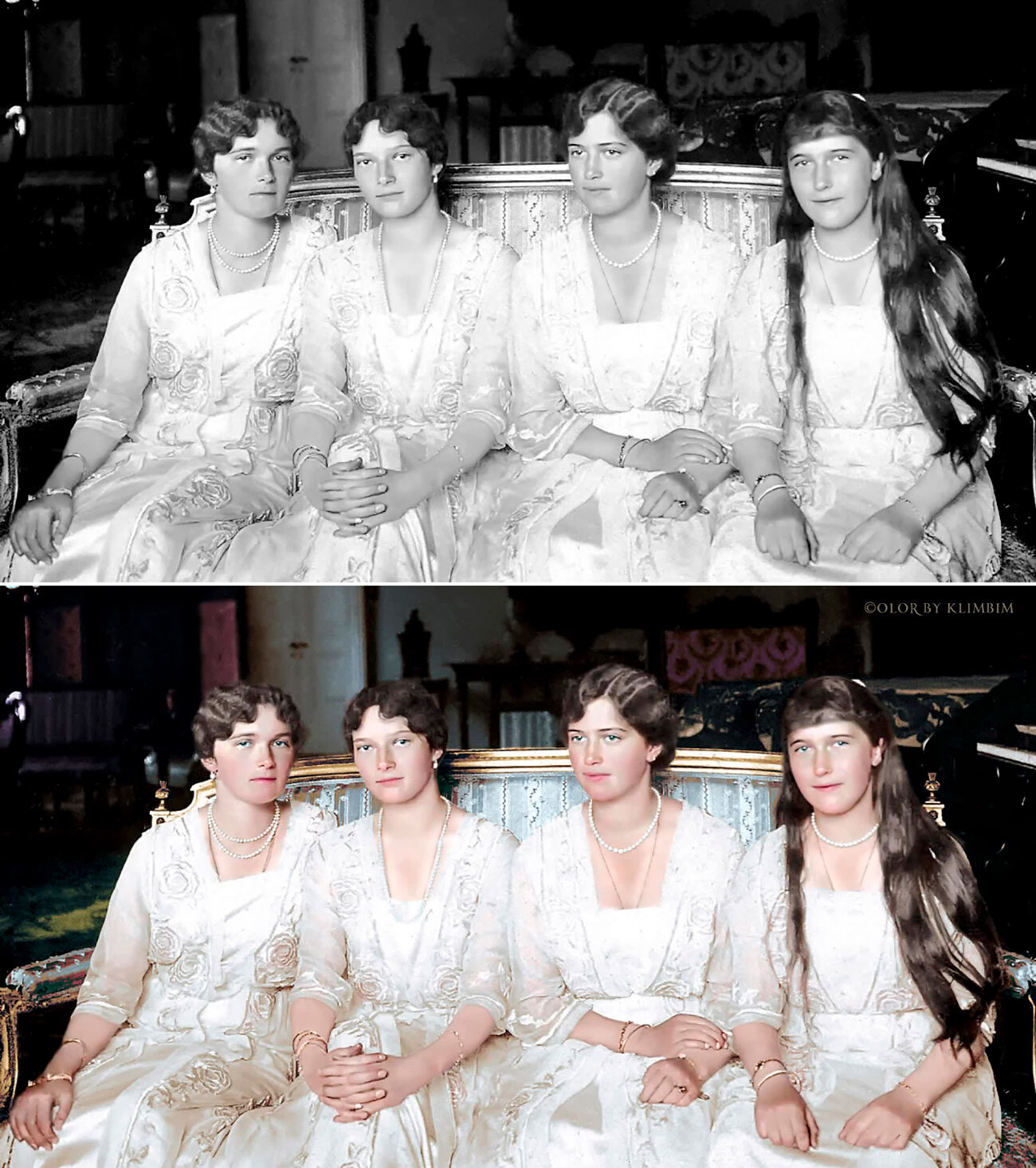
Below, the grand duchesses pose with their mother Alexandra Feodorovna.

Dear readers,
Our website and social media accounts are under threat of being restricted or banned, due to the current circumstances. So, to keep up with our latest content, simply do the following:
- Subscribe to our Telegram channel
- Subscribe to our weekly email newsletter
- Enable push notifications on our website
- Install a VPN service on your computer and/or phone to have access to our website, even if it is blocked in your country
If using any of Russia Beyond's content, partly or in full, always provide an active hyperlink to the original material.
No comments:
Post a Comment
Comments are subject to deletion if they are not germane. I have no problem with a bit of colourful language, but blasphemy or depraved profanity will not be allowed. Attacks on the Catholic Faith will not be tolerated. Comments will be deleted that are republican (Yanks! Note the lower case 'r'!), attacks on the legitimacy of Pope Francis as the Vicar of Christ (I know he's a material heretic and a Protector of Perverts, and I definitely want him gone yesterday! However, he is Pope, and I pray for him every day.), the legitimacy of the House of Windsor or of the claims of the Elder Line of the House of France, or attacks on the legitimacy of any of the currently ruling Houses of Europe.